Have you ever thought, “Wow, these trees around campus are lovely! I wish there was a way for me to rank them in a totally non-arbitrary way?” Don’t fear, for Bwog has you covered.
As we enter fall, a hot topic among Columbia students has been the trees around campus. This is a very important topic, especially for the arborists in our Columbia community. Even if you are not well versed in tree, it is good to be familiar with some of the most admired trees among Columbia’s arboreal community in case you happen to strike a conversation with one of its members. As Bwog’s residing tree specialist, I will be sharing a highly—and rigorously—researched, studied, and tested list of Columbia’s top ten trees on campus. On your bark, get set, go!
#10: The Fayerweather Hall, Thin-Branched Beaut
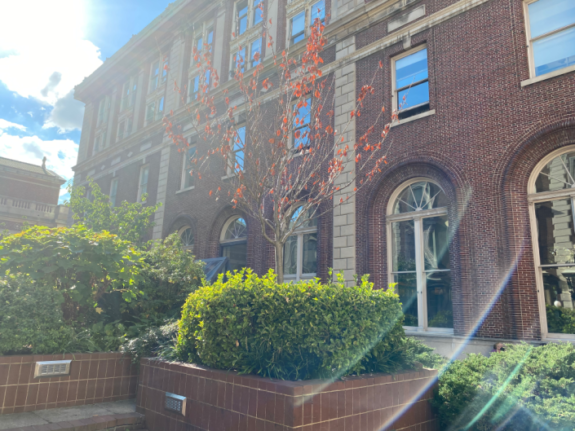
Starting off our list strong is one of the trees outside of Fayerweather Hall. The Fayerweather Thin-Branched Beaut has a quite elegant arch in its trunk. In addition to its curvaceous lower half, the Thin-Branched Beaut is accompanied by its iconic thin and delicate branches which allow for the growth of colorful leaves, especially this time of year. A tree connoisseur would be terribly mistaken not to include this exemplar tree on their top ten list.
#9: The Lerner Hall, Leafy Load
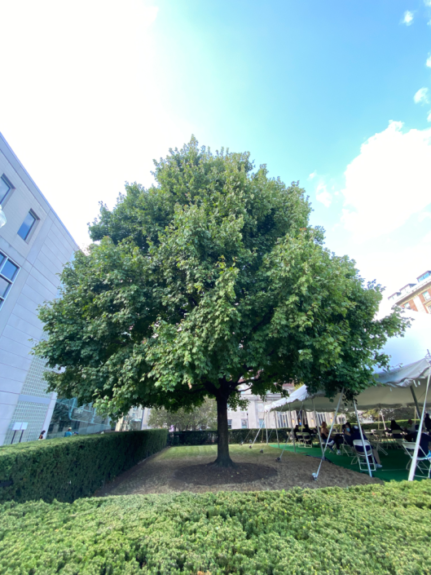
Following the Thin-Branched Beaut comes the Leafy Load from across campus at Lerner Hall. The Leafy Load is a highly discussed tree due to its yellow-orange sheen during fall. This change in color is especially apparent due to the sheer amount of leafage provided by the Load. This is such a significant tree; Columbia even built the tree-facing wall of Lerner out of glass, so the tree can be enjoyed even while having a meal in Ferris. Be sure to check out the Load as we approach November!
#8: The Barnard Hall, Super Seedling
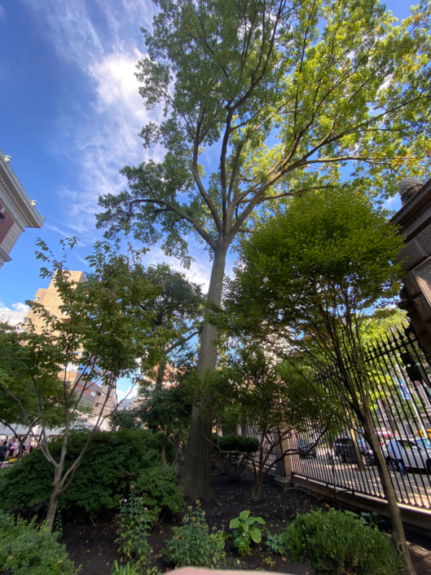
This tree is a bombardment upon the senses. The most standout and obvious feature is its towering height that rains happiness and joy on those observing from below. Another feature making this tree unique is its age. After running a carbon sample on its bark, my team of researchers has confirmed the super seedling to be around seven months old, placing it in the seedling age category for tree growth. If our calculations are correct, by the end of its growth, the Super Seedling is going to be 969 feet tall!
#7: The Uris Hall, Thicc Trunk
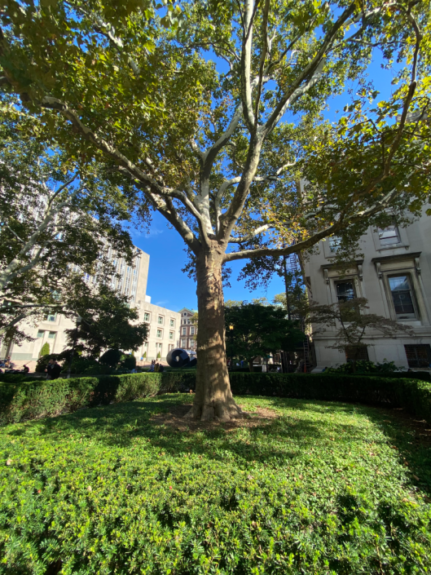
Following the Super Seedling is a tree on the opposite end of the stick. The Thicc Trunk outside of Uris Hall is a widely renowned tree of Columbia’s. This is partially due to the girth and sheer width of its trunk, measuring at about 2.5 feet in diameter. Another reason the Thicc Trunk is highly praised is due to its tree-hugging index. The tree-hugging index is defined by Columbia’s Tree Hugging Association by the magnitude of girth, circumference, diameter, and ease of access for students. For those unfamiliar, having a high tree-hugging index is a trait of a high-quality tree due to the increase in the release of the oxytocin hormone, which controls calmness. The Thicc Trunk lands the second-highest tree-hugging index at Columbia behind a higher spot on this list, however, having access to a tree with a high THI in a more secluded part of campus is not something to scoff at.
#6: The Harley Hall, Calming Canopy
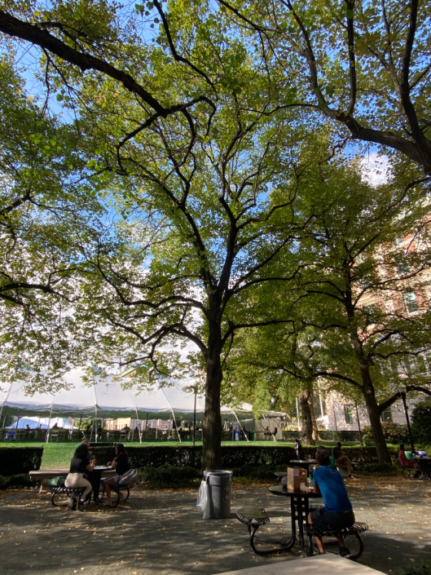
Number six houses the Calming Canopy outside of Hartley Hall. The Calming Canopy is another one of Columbia’s paragon trees. The Calming Canopy embodies peace and tranquility, maintaining a measured and perfect 50% of light through its shading. The Calming Canopy also has slender branching, which emphasizes the beautiful and colorful leaves. The Calming Canopy is a nice place to hang out with friends during the fall!
#5: John Jay Hall
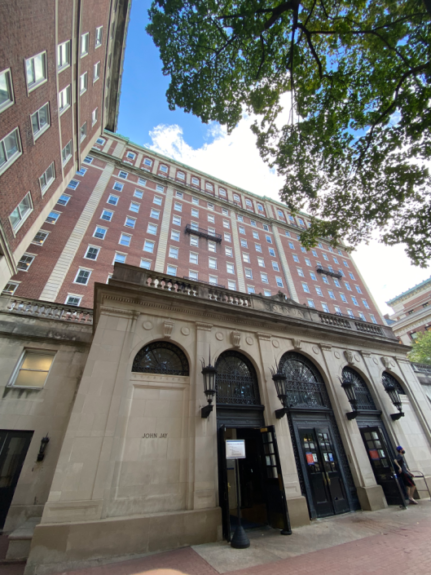
Among all the buildings on Columbia main campus, John Jay Hall provides the most similar experience to a tree. Its height rivals the Super Seedling on the Barnard campus and while the tree-hugging index is not as high as the Thicc Trunk, it is more than enough to provide an enjoyable tree-hugging experience. Due to both of these factors, I believe that John Jay deserves a spot on this list.
#4 : The Low Library Shrub
While many assume the shrub to not fall under the class of tree, I can happily confirm that our taste and DNA tests have positively identified the Shrub as a type of tree. I, and many other tree observers, flock to the Shrub for its design and sleekness. The positioning of the Shrub adjacent to Low Library makes this one of the most iconic trees on Columbia.
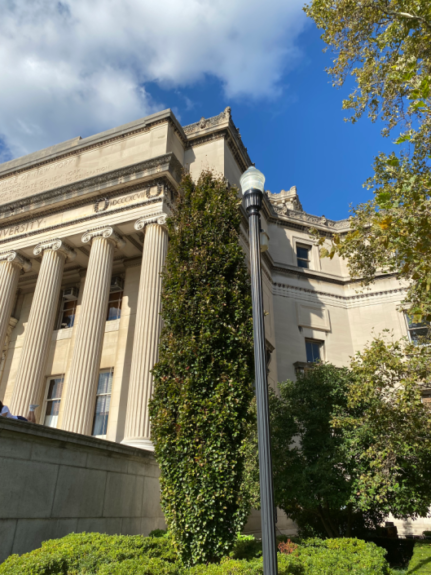
#3: Binary Search Tree in a Northwest Corner Building Classroom

A tree that is familiar to any tree specialist or computer scientist is this binary tree in a NoCo classroom. This is not just any binary tree, however, it is a Binary Search Tree. What makes this tree so special is its graceful and gentle approach to storing and searching for data in a program. It’s not the first thing that comes to mind when you think of trees, but it certainly is one. Binary trees are fitted with a root, branches, and leaves, making it as much of a tree as any other.
#2: The Mathematics Hall, Dummy Thicc Trunk
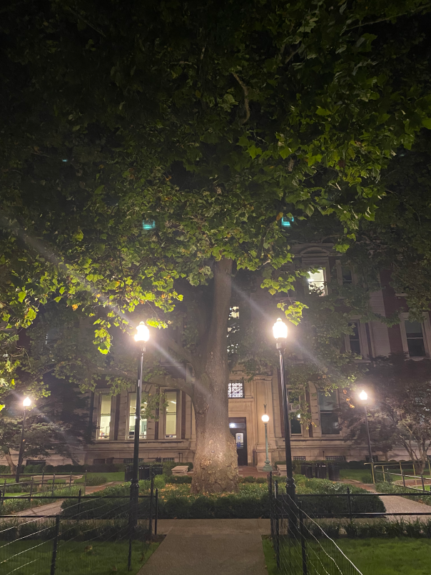
Earlier we discussed the Thicc Trunk tree outside Uris Hall with the second-highest tree-hugging index. The Dummy Thicc Trunk comes in first on that list, with a diameter of 3.3 feet. The Dummy Thicc Trunk is not only good for hugging, but it is also a sight for the eyes, especially during the night. The Dummy Thicc Trunk provides a nice canopy, considering it is lonesome outside the Mathematics Hall. During the night, with the aid of the lamp posts, the greenery from the tree and adjacent grass provide a good amount of color to juxtapose the dark from the night and beige sidewalk and building.
#1: Milbank Hall
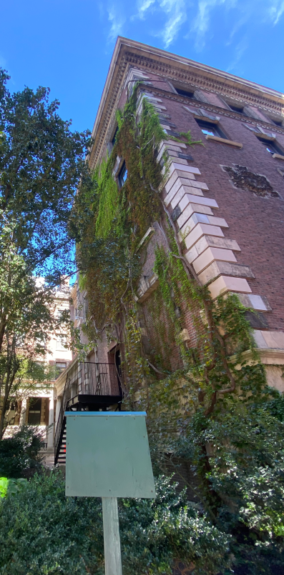
Along with the Super Seedling, Barnard is home to the number 1 tree on this list, Milbank Hall. While it doesn’t necessarily fall under the category of a tree, Milbank Hall exudes tree energy, with vines and moss draping over the side of the building. When initially touring the Columbia and Barnard campuses, I initially mistook Milbank Hall for a tree until it was later revealed to me to be a building with lecture halls in it. Milbank hall is a classic among Columbia’s arborist community due to its jaw-dropping external features.
With that, our list has concluded. I hope with this you are more familiarized with the Columbia arborist community. Spend a day checking out and hugging the trees we recommended!
Note: I am not actually an expert in trees and none of this information is factual, besides the tree-hugging facts, but you should go and check out the cool trees on Columbia’s campus! Definitely make sure to hug them too!
tree header and tree images via Jake Torres


 5 Comments
5 Comments
5 Comments
@Slick Haha binary tree. 👨💻🤓 love it. 😀
@Anonymous Now this is the quality news I look for as a student of Florida Atlantic University.
@Anonymous never forget that the dummy thicc tree in front of math was getting so thing that they had to change the original walkway to math to accommodate it. she wasn’t meant to be the centerpiece in front of math, she made herself that.
@Anonymous you’re kidding. there’s no way
@Kyle Roth Calming canopy is overrated.